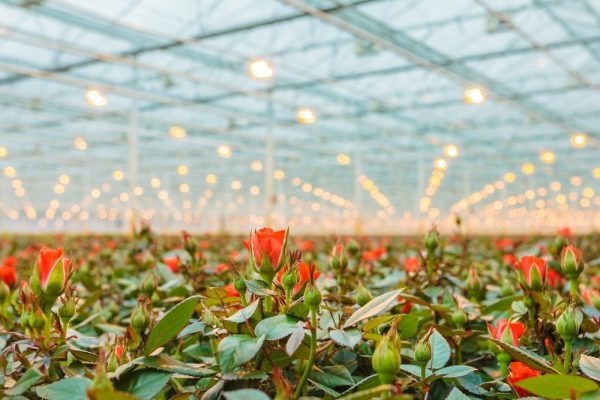Lighting an indoor horticulture space is vastly different than lighting a bedroom, kitchen or dining room.
Indoor horticulture environments use lighting in a unique way, which is why it’s important to understand the lighting challenges that may arise with illuminating indoor agriculture spaces and how to overcome them.
Limitations Exist
Plants require the full spectrum of the sun, and this may be difficult to achieve in indoor settings. While indoor LED lights have advanced technologically, they still face limitations. According to LED Professional, indoor LED lights can’t always match the emissions wavelengths from the sun.
This causes weak optimum photon absorption in plants, which means growth isn’t as strong. Additionally, if lights are always on but not leading to results, companies operating indoor horticulture areas are wasting money.

How can LED Help?
It takes just the right wavelengths of blue and red light to stimulate chlorophyll absorption and plant growth. As LEDs advance, new phospor combinations are really dialing in on narrow bands of the visible spectrum. Solid-state light fixtures can then combine multiple LEDs of red, green and blue to mimic the full spectrum of the sun. LEDs also work well with integrated controls system, allowing the grower to utilize artificial lighting in ways that traditional HID sources could never achieve. The value proposition for growers to convert to LED is not just energy conservation but also improved yields through optimal lighting performance.
Growers have a lot of variables to consider when designing indoor horticulture lighting systems. Luckily, grow managers can use a few tips to ensure they outfit indoor horticulture with the best lighting available.
How to Choose Indoor Lighting
It’s easy to get confused about lighting measurements. For indoor lighting, managers should focus on a quantitative measure of light. According to Fluence, they note the importance of asking for the following pieces of information from the manufacturer:
- PPF
- Input watts
- PPFD maps for the intended coverage area
This information will allow the user to calculate: “PPF/$, μmol/J, light distribution patterns, and uniformity levels.”
PPF stands for photosynthetic photon flux and measures the photosynthetically active radiation (PAR), which is the light that plants use to drive photosynthesis. PPFD, photosynthetic photon flux density, is the amount of light delivered to the grow area. The measurement μmol/J provides guidance on the efficiency of the lighting system.
Decision-makers should be extremely wary of any exaggerated marketing claims regarding grow lights. Consider the following set of rules when evaluating product information:
- Don’t pay attention to products that offer a “magical growth spectrum.”
- Don’t rely on lumens to compare LED lights. This is not a relevant metric for photosynthesis.
- Consider footcandles (how much light arrives on the intended surface) versus how much light is emitted from the fixture.
- Avoid looking at a single PAR measurement while under a lighting fixture (this is only relevant if one were growing a single plant).
- Ask how much PAR is distributed across a canopy. One needs uniform and high PPFD across the grow area.
- Don’t focus on wattage.
Armed with the correct and relevant information, managers of indoor horticulture grow areas can select the lighting product that delivers the necessary amount of light for the lowest initial cost while consuming fewer watts.
Read more:
Major Developments in LED Grow Lighting
Massive Growth Projected for LED Lighting
Understanding LED Dimming Systems
LED Lighting: A Changing Industry
LED Lighting: Changing How We Light Outdoor Spaces
Product Listings Matter in LED Retrofits
Sports Stadiums Embrace LED Lighting
Cities Improving Safety with New LED Streetlights
Night Golfing? Yes, Please! LEDs Making it a Reality
E-commerce offerings:
(Contact a Customer Service Representative for additional selections, options and solutions).
LED Emergency/Exit
LED Recessed Downlights
LED Fixtures
LED Drivers
LED Lamps
Wiring Devices and Lighting Controls
Call and let us help meet all of your supply needs (866-483-7289).
Do you want to order online? All you need to do is fill out this online form.
Key benefits include:
- Order anytime, 24/7, 365 days a year. If you can connect, you can place an order.
- Create order templates, aka “My Lists.” Reduce search time, click, order, done.
- Track purchase history and view your account information. You can review invoices any time, track purchase history, and print or download records.